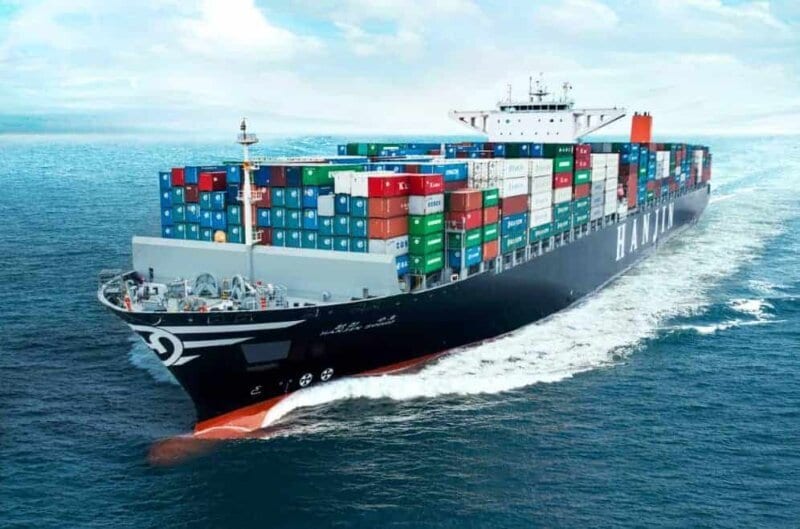
In this guide prepared for companies that want to start exporting, we will explain the export process step by step. How and in what order do the export stages take place? What documents are used in the export process? How is the shipment organized? How and by whom carry out customs procedures?
The most correct way to conduct the first negotiations between the exporter, i.e. the seller, and the importer, i.e. the buyer, regarding exported goods, whether by telephone or face to face, and to be written and recorded, is via e-mail.
In the event that the exporting company submits an offer form or prototype to obtain the approval of the buyer, i.e. the importer, which specifies the characteristics of the goods, the quantity of the goods to be sold, such as kilograms or square metres, and the procedures followed in pricing, an agreement is reached on this and the purchase order is approved. Or sign and stamp the initial form, and this is the most correct method.
In the prepared prototype, all specifications and technical details, if any, of the product to be exported must be specified in a manner that leaves no room for any dispute later on. Again there should be export related sections like deadline, delivery address, name, address and contact details of both companies.
The conclusion of a contract containing the general rules of trade between the two companies, the expectations of both parties, methods for resolving possible disputes and penalties will be binding on both companies. For example, the buyer who submits an order with a specific deadline specifies the last deadline in the contract and specifies the daily penalty for delay, and the exporter accepts this, and in the event that the exporter delays the production and shipping process, he pays the prescribed penalty.
The exporting company may be the manufacturer or supplier of the products you will sell. If there are quality documents and/or technical documents required in customs procedures and subsequent stages for the required products, whether in their country or in the country to which they are to be exported, they must be prepared at the end of the production and purchasing process. If the purchasing company has different requirements such as packaging, pallets or boxes, this must be taken into account.
Taking into account the date of dispatch of the products, if the export is to be carried out using the ex-works method or Group F Incoterms, the purchasing company must be informed to organize and prepare the vehicles. In ex-factory shipments, customs clearance in the exporting country is also the responsibility of the buyer. In general practice, this amount is paid by the buyer’s company separately or a line item is added to the invoice as customs duties. The inbound shipment is organized by the exporting company if the materials are to be loaded at the port in Group F exports, and the receiving trucking company must provide the packing list and the information necessary to prepare the bill of lading or CMR.
In Incoterms Group C exports, the exporting company undertakes to transport the materials to the specified port or address in the buyer’s country.
In Incoterms Group D exports, the exporting company is responsible for all costs, including customs duties in the buyer’s country and DDP exports, including the payment of local taxes.
The exporting company prepares an electronic invoice, an invoice in English, and a packing list in order to complete the customs procedures in its country and then complete the customs procedures in the buyer’s country. On the other hand, you must share the necessary information with the customs broker to prepare documents such as Certificate of Origin, A.TR, EUR.1, and to open permits.
• Electronic invoice (mandatory)
• Invoice in English (required)
• Packing list (required)
• Certificate of origin (mandatory)
• TR,EUR.1 (provides tax exemption for exports in relevant countries)
Bill of Lading is prepared for goods to be shipped by ship or air, and CMR is prepared for goods to be shipped by trucks. Shipping companies prepare these documents, and the exporting company must share the information included in these documents, such as product names, GTIP number, number, weight, container number, shipping address, contact details of the recipient and carrier, and the status of the documents must be verified and confirmed.
The bill of lading prepared by the trucking company according to the information received from the exporter in sea exports is the “bill of lading” document, which is the bill of lading for the transport of goods. It is uploaded and printed when the ship leaves the port in the country of export.
1- Sea shipping
After shipping, the exporting company sends the bill of lading, the English invoice, the packing list and a set of documents consisting of certificates of origin to the buyer’s company via international courier companies. Depending on the country where the buyer’s company is located, sending documents such as A.TR and EUR.1 is important so that the buyer can benefit from tax breaks. In addition, various documents must be sent, such as quality documents, control certificate, and technical documents, if the buyer requests it.
2- Land shipping
In land shipments, a document called a CMR, equivalent to a bill of lading, is attached to the set of documents consisting of the English invoice, packing list, and certificate of origin. In land shipments, the original documents are with the driver in the car.
If the exporting company has agreed with the buyer to deliver the exported goods to the buyer’s warehouses, that is, if the delivery method is CIP or DAP, then it is responsible for internal transportation to the specified address of the buyer’s warehouses. For example, if a container is shipped by sea, then the responsibility falls Internal transportation from the port where the container is unloaded to the recipient’s address in the buyer’s country is the responsibility of the exporting company.
If the delivery method is DDP, customs duties and local taxes such as VAT in the buyer’s country are also the responsibility of the exporter.
The export process is finally closed when the shipping operations are completed, the exported products are delivered to the buyer, the export price is collected, and there is no damage or complaint related to the quality of the exported products.
In the first stage, receipts of expenses and declarations for the export file are sent to the exporter by the customs advisor upon closing the declaration.
The exporting company takes copies of the bill of lading and other original documents to add to its file before sending them to the buyer’s company. Invoices for costs that may occur later, such as shipping bills, bills of lading, warehouse bills, demurrage, and foreign tax payments, if any, are also compared to the initial costs expected after the export is completed. In the last stage, the unit costs estimated at the beginning and the final costs are compared

Export is considered one of the most important sources of income for the state by opening new markets for its products. Export requires that the products comply with standards that include a certain level of quality that allows the amount to be accepted in the market for the exporter.
Hence, our company established export currency for some factories so that it could open new markets.
We saw the lack of knowledge of many Egyptian factories about how to export, their fear of opening global markets, and their failure to study how to manage the export currency and participate in international forums and exhibitions. Hence, our role came in establishing and qualifying Egyptian companies and factories for export, explaining how to export, and establishing a management. Exporting in factories and teaching them how it is possible to open new markets and increase the hard currency of the country and explaining how to benefit from the agreements concluded by the government with various African and European countries and how to benefit from them.
The following is an explanation of the services we provide to factories in order to complete the export process and how to reach the target customer.



